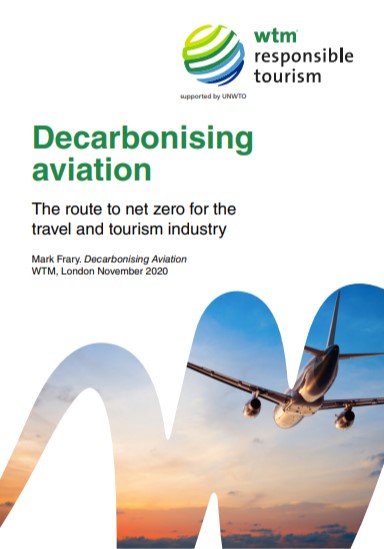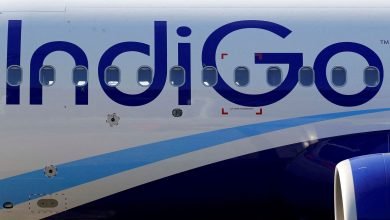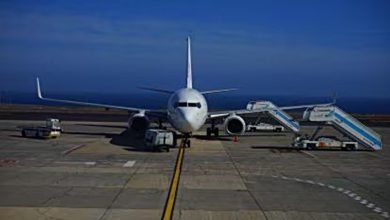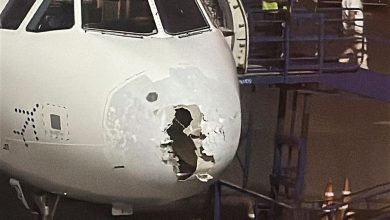Decarbonising Aviation | WTM Global Hub

Slowly around the world efforts are being made to decarbonise our lifestyles. A relatively small proportion of the world’s population flies each year, some of us fly frequently. Mounting concern about climate change has led to Extinction Rebellion, the flight- shaming movement Flygskam and Stay Grounded. In June last year, IATA’s Director-General said that the “freedom to fly makes our world a better place”. He conceded that there is increasing public concern about flying. As he acknowledged some “say that the answer to climate change is to stop or heavily reduce flying”. He was right to say that “Unchallenged this sentiment will grow and spread”.
Indeed it will, and the people who fly are a minority. I agree with him that to stop or substantially reduce flying “would have grave consequences for people, jobs, and economies the world over. It would be a step backward to an isolated society that is smaller, poorer and constrained.”
But the problem is not flying; the problem is the emissions which result from burning fossil fuel. The carrot and stick approach of taxation, regulation and incentives has worked well to move car transport away from its reliance on fossil fuels. In November last year finance ministers from nine EU countries called on the European Commission to introduce an aviation tax to counter aviation’s environmental impacts. Until now, the aviation sector has successfully asserted that there is no alternative to dependence on fossil fuel. Carbon offsetting has been the preferred strategy, particularly where the consumer can be encouraged to pay separately for the offset. The problems of offsetting are well known. Generally, carbon offsetting is too good to be true.
Failing to achieve zero emissions by 2050 will result in global warming of more than 2°C with disastrous consequences. CO2 accumulates in our atmosphere along with other greenhouse gases. The IPCC reports the atmospheric lifetime of Nitrous Oxide at 114 years and Carbon Dioxide at 5 to 200 years. No single life can be defined for CO2 because of the varied rates of uptake by different removal processes. As the measurement of atmospheric CO2 at the Mauna Loa Observatory in Hawaii reveals, the concentration of this greenhouse gas continues to rise inexorably. Aviation contributes 3.5% of all the human activities that drive climate change.
The aviation industry is our sector’s Achilles’ heel. The travel and tourism industry depends on aviation for an essential part of the business, it should demand more of its supplier. Aviation rightly argues that it is making efficiency gains, fuel-hungry 747s are being abandoned, better air traffic control and flight planning could also reduce fuel consumption. For many island destinations with a high dependency on tourists who arrive by air the problem is particularly acute. Threatened by rising sea levels and needing to see significant reductions in greenhouse gas emissions but reliant on tourism, they need clean aviation.
The problem is not flying. The problem is the fuel they burn. The problem is carbon. The climate crisis gathers pace; there is no longer time for procrastination. COVID-19 has temporarily reversed the growth in aviation, but IATA forecasts a return to 2019 levels by 2024, and forecasting that overall traffic in 2025 will be only 10% lower than it was pre-pandemic.
Working with Chris Lyle, of Air Transport Economics and Professor Paul Peeters of Breda University of Applied Sciences, in June this year WTM hosted a symposium bringing together a group of leading experts to address the problem of how to decarbonise aviation. Our purpose was to reveal that there is an alternative to fossil fuel and to argue that the tourism industry should campaign for governments to encourage the aviation sector to develop and adopt zero-carbon fuels before there is a forced reduction in flying. The symposium is available online, and WTM has just published a report on Decarbonising Aviation.

There is also a whole series of interviews with experts and campaigners conducted with Chris and Paul on video.
Aeroplanes are expensive and operate for decades; planes going into service now will still be flying in 2050. If aviation is to be permitted to continue to grow, it has to transition to clean fuel. The transition is urgent.
The easiest way to replace fossil-fuel-based aviation fuel is to use a sustainable alternative (SAF). SAFs have two advantages. Mixed with fossil jet fuel they can be used in existing engines, and they use existing fuel delivery and storage infrastructure. Germany, the Netherlands, France, Norway, and the UK – have begun setting unilateral targets for the use of SAF mixtures, the Netherlands is expecting to require 14% by 2030 and 100% by 2050. These mandates need to be applied globally to effect a significant reduction in emissions. SAFs are significantly more expensive than kerosene, so regulation will be required if they are to be adopted. There are two kinds of SAFs: biofuel made from biomass and e-fuels produced using a power-to-liquid process.
Chlorophyll converts sunlight into usable energy very inefficiently so that biofuels require large areas of land or sea conflicting with food production and the maintenance of biodiversity. Biofuels cannot reduce emissions to zero, because large scale changes in land use would also add substantially to climate change .
E-fuels (electro-fuels) are manufactured using renewable energy to combine water and pure CO2. The CO2 can be captured from smokestacks or from the air. With Direct Air Capture (DAC) the carbon cycle is closed and zero emissions can be achieved. A carbon tax, regulation, subsidies and substantial investment would be needed to enable E-fuels to replace kerosene.
Paul Peeters explains the scale of the challenge and discusses how we might achieve significant reductions:
Electric flight is difficult because of the weight of the batteries. In 2017 Airbus, Siemens and Rolls-Royce announced a hybrid-electric aircraft, E-Fan X . The project was cancelled earlier this year. The aircraft would have saved less than 10% of carbon emissions and would have flown with less space and payload.
Hydrogen is the focus of the panel on decarbonising aviation at WTM, London this year.
Hydrogen can be used to produce e-fuels used directly in current aircraft and it can be used as a fuel in a gas turbine or internal combustion engine or in a fuel cell to power electric engines. The only emission from burning hydrogen in a fuel cell is water vapour. This may still create contrails which warm the atmosphere. But this can be reduced by changing flight altitude and the impact is temporary, once the contrail dissipates the effect is zero. By contrast, when hydrogen is burned in gas turbines, both water vapour and nitrous oxides are emitted.
Airbus Deutschland, with 35 partners, completed a two-year analysis of hydrogen as an aviation fuel in 2002. The study concluded that hydrogen-fuelled engines were just as energy efficient as kerosene and that implementation could “take place within 15 to 20 years”. The study estimated that operating costs would increase by around 5%. In 2007 Rainer von Wrede, Airbus director of sustainable development, said that there were no technical obstacles, but many hurdles including the ability to produce hydrogen in an environmentally friendly way in sufficient quantities. We have Jason Chua COO & Co-Founder of the Universal Hydrogen Co. on the panel to address this issue for us.
There may be a return to hub and spoke flying using electrically powered aircraft on shorter spoke routes and e-fuels or hydrogen on the longer routes connecting hubs.
- The EU has launched Clean Aviation which aims to accelerate the development and demonstration of integrated aircraft technologies towards deep de-carbonisation while ensuring safety and security.
- The UK government has launched a Jet Zero Council (JZC) to develop and industrialise zero-emission aviation and aerospace technologies
- In September Airbus revealed three concepts for the world’s first zero-emission commercial aircraft which could enter service by 2035. We have Keith Bushell from Airbus on the panel to tell us about their plans.
- ZeroAvia developed a six-seater aircraft flying on hydrogen in two years, In September ZeroAvia completed the world’s first hydrogen fuel cell-powered flight of a commercial-grade aircraft, a Piper M-class six-seat plane. They plan to complete a 250-mile zero-emission flight this year.
- Hybrid Air Vehicles is developing a common core aircraft, type certified to civil aviation regulations and offered to customers at a fixed price, we remove the potential barriers to adoption associated with the development of bespoke aircraft delivering Airlander 10 by 2025
- In Canada, the SAFplus consortium is now producing synthetic e-fuels using CO2
- By 2030, the Dutch government will mandate mixing 14% sustainable fuels (including synthetic e-fuels)
There are a range of other voices discussing decarbonising aviation available here
Boeing is sceptical. Mike Sinnett, Boeing Commercial Airplanes vice president of product development and future aeroplane development, has said recently
“We know a lot about how kerosene is burned, how it can be stored safely and how it can be transported, and how engines use that fuel in all environments from the Arctic to the desert,” he says. “As we transition to more sustainable fuels, we have to ensure there’s no backpedalling in those levels of safety. And that means there’s still a lot to learn about how you would create, transport and use hydrogen in all the operational environments, ranging from a Siberian winter to an Algerian summer.”
There is an urgent need for change.
It will take decades for the current global fleet of 25,000 planes to be replaced unless, as for automobiles, a scrappage programme were to be funded.
Dr Paul Peeters has developed a Global Tourism and Transport Model (GTTMdyn), a system dynamics model that describes the global aircraft fleet, global travel demand, economic and demographic development, technological development as a function of fuel cost, regulation and taxes. It contains many feedback loops and a travel behaviour model based on psychological economics. His scenarios model reveals that if aviation does not hurry to reduce its emissions, then regulatory restrictions on flights may be inevitable. Dr Peeters says that even a carbon tax of $1,000 a tonne or air ticket taxes of 200% would not get emissions down to sustainable levels. The industry has long assumed that other industries will bear the pain of carbon reductions and that governments will not regulate and tax flying for fear of the electorate.
Further delay and reliance on carbon offsetting will make solutions more radical and expensive and impact negatively on the travel and tourism industry and with potentially disastrous impacts on many tourism-dependent destinations.
What can be done now to make decarbonising aviation a reality?
For the next 15 years, no more.
- Tour operators and destinations could demand that airlines adopt e-fuel mixtures and accept the higher cost for tickets associated with e-fuel use;
- Governments and international bodies could legislate to impose e-fuel mixtures leading to 100% by 2050, or earlier ;
- Airlines could make greater use of drop-in e-fuels, at least for the short- to mid-term, and purchase or lease next generation aircraft flying on hydrogen.
- Aircraft manufacturers must invest more in the development of zero-emission aircraft and speed up the pace of fleet replacement;
- Governments could withdraw support for the development of existing aircraft technology in favour of e-fuels and hydrogen fuel cells;
- International commitments to adopt carbon-friendly flight procedures, such as Single European Sky and avoiding parts of the atmosphere where contrails develop;
- More offsetting, using higher quality schemes, for no more ten years
- Travellers could vote with their feet, reducing or even ceasing flying forcing airlines to make the changes or switching to other modes of transport.
It is time now to make clear that by 2035 a real step change needs to be taking place with clean fuel aircraft becoming a large proportion of operating fleets on a timeline backed by regulation. There is an alternative, aviation needs to adopt it.
Decarbonising Aviation Tuesday 10th November 15:30-16:30
The aviation industry is our sector’s Achilles’ heel. Flying is not the problem; the emissions from the fuel that aviation runs on is the issue. While more and more industries and nations reduce their greenhouse gas emissions and commit to reduce these to zero by 2050, aviation lags far behind. If the aviation sector fails to achieve zero emissions flight, this will harm our industry and cause problems for destinations like Seychelles, the Caribbean and The Gambia. Fortunately, there are solutions as a WTM hosted symposium on Decarbonising Aviation clearly showed back in June. The current fleet can fly zero-emissions on synthetic e-fuels and hydrogen, fuel cells and electric propulsion pave the way for zero-emission aircraft in the future. Airbus has announced that they will have ‘zero emissions’ hydrogen-fuelled aircraft in the air by 2035.
How quickly will the airlines take up zero-emissions flight? How should the travel and tourism sector respond if aviation, a major supplier, fails to adopt clean technology fast enough, presenting a significant risk to our industry in general and the many destinations dependent upon it? How can we best encourage the aviation industry, manufacturers, airports and airlines to make rapid change? Is the tourism industry willing to accept some additional cost and able to force its supplier to adopt the best technologies? Will polluting aircraft still be flying in 2050? How do we speed the introduction of zero-carbon flight?
Keith Bushell, Manager – UK Environmental Affairs Stakeholder, Airbus
Jason Chua, COO & Co-Founder, Universal Hydrogen Co.
Ayesha Constable, Climate Change Adaptation researcher and practitioner, Jamaica
Matthew Gorman Carbon Strategy Director, Heathrow
Noel Josephides Chair Sunvil Holidays
Captain David Morgan Director of Flight Operations easyJet
To watch this session please register here to attend WTM Virtual: https://london.wtm.com/visit/Visitor-registration/
For the background to why we are focussing on hydrogen read the latest background on the decarbonisation of aviation on the WTM Hub
تمت الترجمة بواسطة موقع شرقيات



